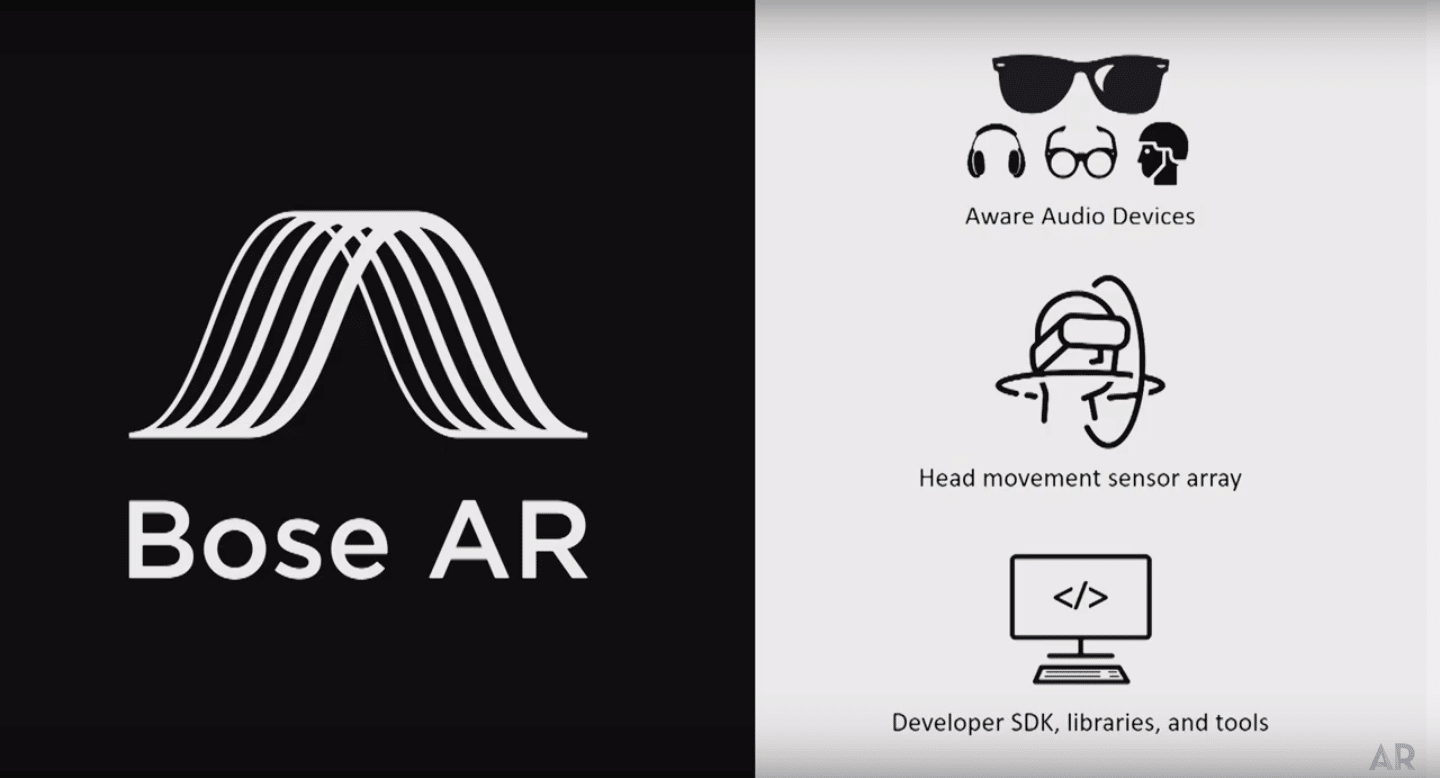
XR Talks is a series that features the best presentations and educational videos from the XR universe. It includes embedded video, as well as narrative analysis and top takeaways. Speakers’ opinions are their own.
Frequent AR Insider readers know our obsession with “Audio AR.” Rather than graphics that overlay your field of view, intelligent audio whispers inform you of surroundings and guide you through your day. Eventually it will converge with its graphical cousin, with Apple as a front runner.
But another likely candidate is Bose. The sound leader’s first foray into audio AR is ironically not speakers or earbuds (a la Apple), but glasses. We’re talking glasses whose main output is sound. That’s a few oscillations in logic before landing back on something that actually makes sense.
Its “Frames” AR glasses have a sleek and non-technical look, but house small speakers at the temples to provide subtle sound cues. According to Bose’s John Gordon at the ARiA conference, that starts with familiar territory — music — but will evolve into more situationally-aware audio.
“How many people think of Bose as an AR company? Probably not many,” he said. “If you take the broadest reach of what AR could mean, taking digital information and mixing it with the physical world, that goes back to what we have done at Bose for over 50 years… music.
https://youtu.be/rWyZOUpKqY4
This gets into a key principle of AR’s cultural adoption, which is that the hardware comes first. Mobile AR is the current play because we all already own the device. Snap is conditioning face worn sensors through Spectacles, while Apple is conditioning AR Audio through AirPods.
“Start with something people want,” said Gordon. “People want to bring music into their lives, they want to bring sound in, and they will put something on their head to do it. But we wanted to go beyond that we figured now that we’ve got something on people’s heads, what’s next?”
The first answer to that question is the Frames glasses mentioned above. The next step is an audio AR platform that will go into all of its headword devices — glasses, earbuds, etc. They’ll also have sensors that track head movements in order to eventually deliver intelligent audio.
“Head tracking sensors… magnatometers… accelerometers… What these help us do is get context for how you’re moving,” he said. “So not only do you play music serendipitously, but also the right type of audio because you know what someone is doing and how they’re moving.”

Examples include local discovery and navigation, posed Gordon. This includes familiar Audio AR aspirations like walking around a new city, while getting informed about where you are and what you’re looking at. The aforementioned sensors lay the groundwork to deliver that experience.
“It’s like having an expert tour guide with you as you move,” he said. “That capability is unlocked because we know where you are and we know where your head is looking. So you have that ability and if you want to hear more or hear less, you can nod or shake your head or tap.”
Beyond the foundation set by the hardware sensors, other key components lie further up the stack. That includes apps that are built on Bose’s audio AR platform and SDK. That will lead to several thematic layers of content, like a sort of audio version of the “magicverse.”
“What we started to realize was that there’s this whole world of audio content that you can pin to the real world,” said Gordon. “So what’s the architectural tour of the city? what’s the blues tour? There can be layers and layers and layers tied to the same physical space.”
As for next steps, Frames are already in market as a proof of concept, but the real strategy lies in the platform. Bose will integrate the platform in its own products going forward, while also opening it up to third parties through an SDK. It’s even launching a $50 million fund for developers.
“Bose provides millions of things to people that they put on their heads already,” said Gordon. “We’re going to put the technology in all of it. And we’re positive we’re going to have over a million [Audio AR] devices before the end of this calendar year in customers hands.”
See the full talk below
For deeper XR data and intelligence, join ARtillery PRO and subscribe to the free AR Insider Weekly newsletter.
Disclosure: AR Insider has no financial stake in the companies mentioned in this post, nor received payment for its production. Disclosure and ethics policy can be seen here.
Header image credit: AR in Action

